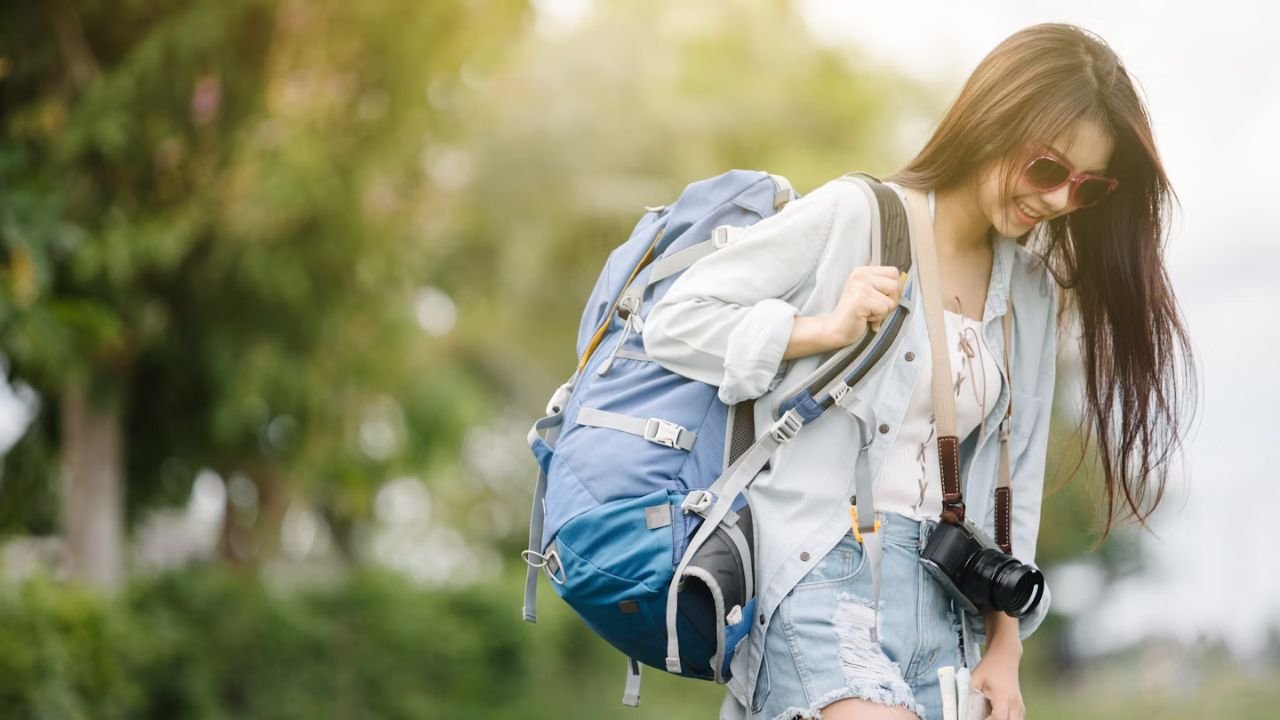Introduction
Traveling has always been an enriching experience, offering opportunities for adventure, cultural exchange, relaxation, and personal growth. However, in recent times, global events such as the COVID-19 pandemic, geopolitical tensions, natural disasters, and rising crime rates have significantly impacted travelers’ sense of safety and security.
Despite these challenges, travel remains an essential part of life. Whether you’re planning a short trip, a long vacation, or a business journey, feeling safe and secure is paramount. This guide provides practical advice, health precautions, technological tools, mental strategies, and safety tips to help you navigate the complexities of modern travel confidently.
By adopting a proactive approach, staying informed, and leveraging available resources, you can minimize risks and enhance your overall travel experience.
1. Prioritize Your Health and Well-Being
1.1. Stay Informed About Health Risks
Before traveling, research the current health situation of your destination. Check official sources such as the World Health Organization (WHO), Centers for Disease Control and Prevention (CDC), and local health authorities for updates on:
- COVID-19 status, vaccination requirements, and testing policies
- Outbreaks of other infectious diseases (e.g., yellow fever, dengue)
- Environmental hazards like pollution or natural disasters
1.2. Get Fully Vaccinated and Up-to-Date
Ensure your vaccinations are current, including COVID-19 boosters, flu shots, and other recommended immunizations. Carry official vaccination certificates if required.
1.3. Follow Preventive Hygiene Measures
- Wash hands regularly with soap and water for at least 20 seconds.
- Use hand sanitizer containing at least 60% alcohol when soap isn’t available.
- Wear masks in crowded or enclosed spaces if recommended or mandated.
- Avoid touching your face, especially eyes, nose, and mouth.
- Cover coughs and sneezes with your elbow or tissue.
1.4. Carry Essential Personal Protective Equipment
- Masks (surgical or N95/KN95 for higher protection)
- Hand sanitizer
- Disinfectant wipes
- Personal medications and health supplies
1.5. Be Prepared for Medical Assistance
- Know how to access healthcare services at your destination.
- Carry your health insurance details and any necessary medical documents.
- Download local emergency numbers and healthcare facility contacts.
2. Research and Choose Safe Destinations
2.1. Check Travel Advisories
Consult government travel advisories to understand safety levels, entry restrictions, and health protocols for your intended destination.
2.2. Assess Crime and Security Levels
Review crime statistics and safety reports from reputable sources such as:
- Government travel safety websites
- International safety organizations
- Travel forums and reviews
Avoid high-crime areas and regions experiencing unrest or conflict.
2.3. Understand Local Laws and Customs
Familiarize yourself with local laws, customs, and cultural norms to avoid misunderstandings and legal issues.
2.4. Consider the Infrastructure and Services
Choose destinations with reliable transportation, healthcare, and emergency services.
3. Plan Your Trip with Safety in Mind
3.1. Book Reputable Accommodations
Select accommodations with positive reviews, good safety records, and appropriate amenities. Look for:
- Security measures (24/7 reception, CCTV, secure locks)
- Clear emergency procedures
- Accessibility to medical facilities
3.2. Arrange Reliable Transportation
- Use licensed taxis, ride-sharing apps, or pre-arranged transfers.
- Avoid unregistered or informal transport options.
- Know the transportation options available at your destination.
3.3. Share Your Itinerary
Inform trusted friends or family members of your plans, including flight details, accommodation addresses, and contact information.
3.4. Purchase Travel Insurance
Secure comprehensive travel insurance covering health emergencies, trip cancellations, lost belongings, and emergencies.
4. Leverage Technology for Safety
4.1. Use Safety Apps
Download apps designed to enhance traveler safety, such as:
- Google Maps and Apple Maps for navigation
- Travel safety apps like SmartTraveler, GeoSure, or Sitata
- Emergency apps that provide quick access to local emergency services
- Language translation apps to communicate effectively
4.2. Enable Location Sharing
Share your live location with trusted contacts via apps like WhatsApp, Google Maps, or dedicated safety apps.
4.3. Keep Digital Copies of Important Documents
Scan and store copies of your passport, visa, travel insurance, vaccination certificates, and emergency contacts securely online.
4.4. Activate Device Security
- Use strong passwords or biometric locks.
- Enable remote tracking and wiping features in case your device is lost or stolen.
- Keep devices updated with the latest security patches.
5. Stay Alert and Mindful During Your Trip
5.1. Be Aware of Your Surroundings
Always stay vigilant, especially in unfamiliar environments:
- Observe local customs and behavior norms.
- Avoid distractions like excessive phone use in public.
- Stay in well-lit, populated areas, especially at night.
5.2. Maintain Personal Boundaries
- Keep your belongings close and secure.
- Avoid displaying valuable items openly.
- Be cautious when accepting drinks, food, or offers from strangers.
5.3. Trust Your Instincts
If a situation feels unsafe or uncomfortable, remove yourself immediately. Your intuition is a vital safety tool.
5.4. Use Safe Transportation Options
- Always opt for reputable transport providers.
- Avoid hitchhiking or unlicensed taxis.
- Share your route with someone you trust.
6. Protect Your Valuables and Personal Data
6.1. Minimize Carrying Valuables
- Limit the amount of cash and valuables you carry.
- Use secure bags with theft-proof features.
- Keep valuables in hotel safes or secure lockers.
6.2. Be Wary of Pickpockets
- Keep bags zipped and close to your body.
- Avoid crowded tourist spots if possible.
- Use anti-theft accessories like RFID-blocking wallets.
6.3. Safeguard Personal Data
- Avoid oversharing on social media about your location.
- Be cautious when using public Wi-Fi; consider using a VPN.
- Keep your devices password-protected.
7. Prepare for Emergencies
7.1. Know Emergency Contacts
- Local police, ambulance, fire services.
- Your country’s embassy or consulate.
- Emergency medical facilities.
7.2. Carry a First-Aid Kit
Include essentials like bandages, antiseptic, pain relievers, and any personal medications.
7.3. Have a Contingency Plan
- Know how to evacuate or seek shelter if needed.
- Have backup plans for accommodation or transportation.
- Keep a list of emergency contacts both locally and back home.
8. Special Considerations for Solo, Female, or Vulnerable Travelers
8.1. Solo Travelers
- Share your itinerary with trusted contacts.
- Avoid risky areas and situations.
- Carry self-defense tools if legal and appropriate.
8.2. Female Travelers
- Dress modestly if culturally appropriate.
- Use women-only transportation or accommodations where available.
- Trust your instincts and avoid isolated areas.
8.3. Travelers with Disabilities or Special Needs
- Inform service providers of your requirements.
- Carry necessary medical devices and supplies.
- Plan accessible routes and accommodations.
9. Cultural Sensitivity and Respect
Respect local customs and traditions to foster positive interactions and avoid conflicts, which contribute to your overall safety.
10. Mental and Emotional Preparedness
Feeling safe isn’t solely about physical security; mental confidence is crucial.
- Practice mindfulness and stress-reduction techniques.
- Stay informed but avoid overwhelming yourself with negative news.
- Maintain a positive attitude and flexibility in plans.
Conclusion: Travel with Confidence and Peace of Mind
Traveling in today’s world can be daunting, but with the right preparation, awareness, and mindset, you can significantly reduce risks and enjoy your journeys fully. Remember, feeling safe is a combination of practical measures, technological tools, cultural awareness, and self-trust.
Always stay informed, plan ahead, and listen to your instincts. Equip yourself with knowledge and the right resources, and you’ll be empowered to explore new places with confidence and peace of mind.
Happy travels!

